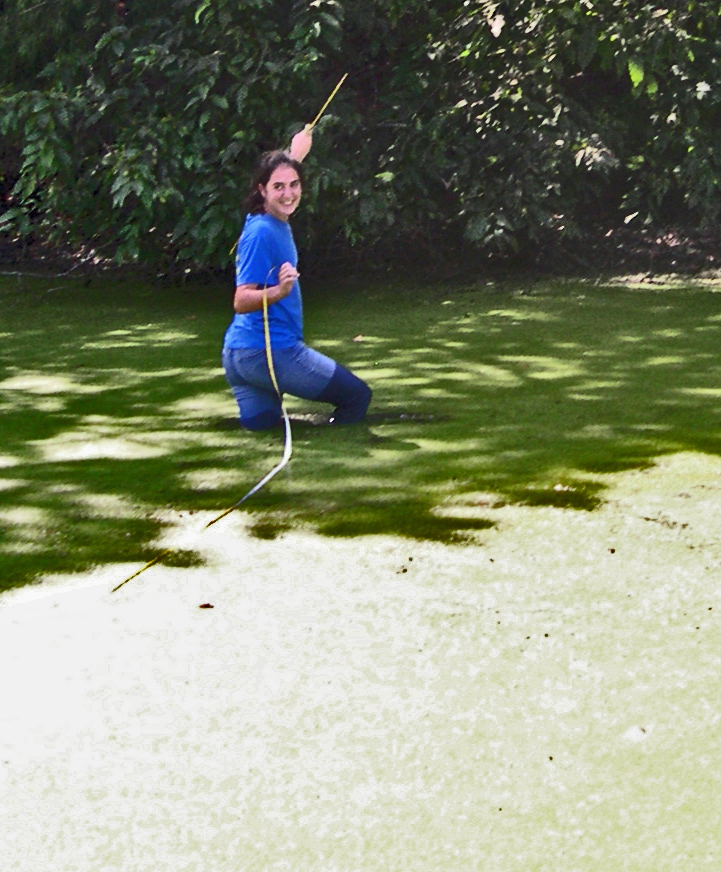
Measuring the width of Christmas Lake Branch, DNWR
 Measuring the width of Christmas Lake Branch, DNWR | The Mississippi River at the site of the 1927 levee break. |
|---|
| Wetland ecology is a 4 hour course offerred as an upper level undergradaute (BIO 477) or graduate level (BIO 577) elective. It is intended for those students who are planning on attending graduate school or work in a field where an understanding of wetlands is needed. | The course examines the many interacting elements that
make up different wetlands focusing on those types of wetlands found in the
Mississippi Delta. When viewing the Sunflower River at flood stage (center), it's easy to see the force that caused the Mississippi levee break in 1927. |
| Wetlands are much more
than just mudholes where mosquitos breed. They are second in economic
value only to estuaries, contributing billions of dollars into the
world's economy. There are countless species of plants, mammals,
snakes, lizards, birds, and amphibians that are found in the Bottomland
Hardwood Forest that once covered much of the Mississippi Delta. Yet
for all their value, wetlands have been drained, filled in, abused, and been
the repository for human waste for centuries. The photo at right shows numerous types of pollutants that have historically been thrown into wetlands. |  |